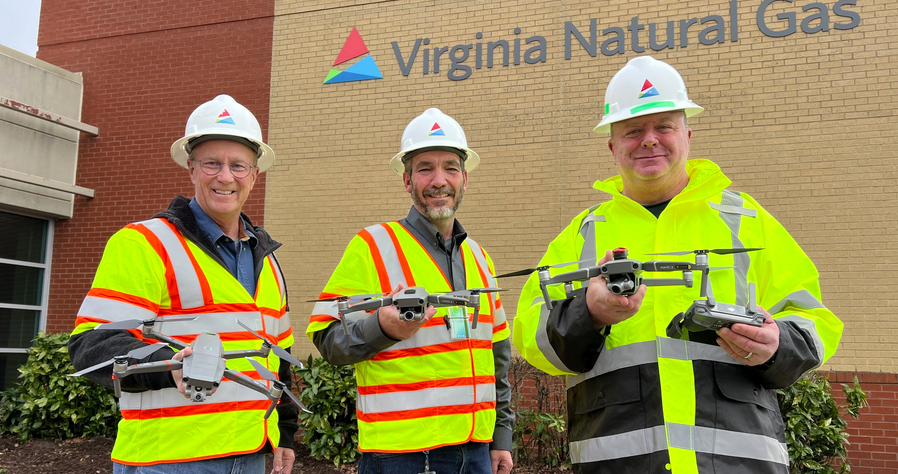
Virginia Natural Gas (VNG) is embracing technology and will be using aerial drones as another means to perform equipment inspections on its pipeline infrastructure.
Unmanned Aerial Vehicles (UAVs) will begin flights across Hampton Roads, as well as northern James and New Kent Counties for various operations such as inspections of critical infrastructure, right-of-way assessments, and the inspection of more than 5,500 miles of gas pipeline.
Virginia Natural Gas will be one of the first natural gas utilities in the state to use UAVs while simultaneously conducting a pilot program for its sister companies in Illinois, Georgia and Tennessee that all fall under VNG's parent company, Southern Company Gas.
Building on the program already established in 2015 by Southern Company, parent of Southern Company Gas, VNG will develop best practices and procedures on how to best use the new technology in the utility space.
"Southern Company, and now Virginia Natural Gas, is leading the energy industry in deploying state-of-the-art drone operation technology and elevating their processes," said Dean Barefield, Unmanned Aerial Services program manager at Southern Company. "We see parallels between our electric and gas utilities and the ability to integrate that technology. The addition of drones to the day-to-day operations at VNG will offer a cost-effective platform for pipeline inspection while increasing efficiency and safety due to their availability, range and ease of operation."
Virginia Natural Gas will employ self-dispatched Mavic 2 Pro drones that allows engineers, and asset protection and construction managers to have the opportunity to use UAVs as part of their daily work.
"VNG is always looking at new, innovative ways to help us continue to provide reliable service to our customers," said Zack Gravely, Asset Protection specialist and one of the new drone pilots. "Drones are ideally suited for inspecting equipment because they can safely and quickly deliver high-quality photos and videos of our system in a way that can minimise environmental impact and inconvenience for customers along any rights-of-way. This technology will be another tool in our arsenal."
In the past, traditional methods for pipeline inspection have been slower, manually intensive, expensive and sometimes cause safety concerns due to the surrounding natural environment to conduct. Even though natural gas pipelines run underground, they are accessed from above the surface for maintenance and inspection. Vegetation, for instance, will overgrow and obscure the path of workers trying to access the pipeline.
Drones equipped with a visual or infrared camera can now be used for navigating and patrolling a segment of pipeline, identifying and capturing images or videos of areas of interest at pre-defined timings and returns.
A team of three trained pilots will fly the drones for VNG. They recently obtained their pilot certifications from the Federal Aviation Administration and hope to have the program up in the air soon to help them see from above what they can't on foot.

















